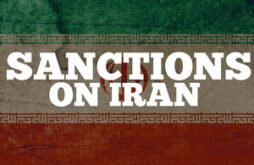Iranwire – The fourth wave of coronavirus infections now appears to have subsided in most Iranian provinces. But the death toll remains high, at an officially-recorded 300 to 400 per day. Two other variants of SARS-CoV-2 first detected in India and South Africa have also reportedly entered Iran, with cases confirmed in the provinces of Hormozgan, Yazd, Bushehr and West Azerbaijan.
Eid al-Fitr, the holiday that marks the end of Ramadan, will fall this year on Wednesday, May 12 and the National Coronavirus Taskforce has announced that from midday on May 11, private vehicles will not be allowed to travel between provinces. Considering the ban’s scheduled start time, it seems likely most travelers will either end up stuck on the roads or simply make their journeys the night before.
Cases of Two New Coronavirus Variants Are Confirmed
Health Minister Saeed Namaki reported on May 4 that five confirmed and 30 suspected cases of infection with the coronavirus variant first detected in South Africa have been recorded in the southern province of Hormozgan.
He also said three cases of the variant first found in India have been reported in Qom, while at least 10 cases of infection with the so-called “Indian-Californian” hybrid variant have been detected in an industrial complex staffed by Indian workers in West Azerbaijan. Cases of the same hybrid variant have also been detected in Yazd province in a factory employing both Iranian and Indian workers.
Elsewhere, Bushehr University of the Medical Sciences announced that of 21 Pakistani and Indian nationals are in quarantine, of whom three tested positive for the “Indian coronavirus” while nine had been infected with the “original” coronavirus.
As with other so-far recorded variants, the strain identified in India is more infectious and so far appears to spread more quickly between young people. Minoo Mohraz, a member of the National Coronavirus Taskforce, claimed this variant is “very deadly” and the only effective way to fight it would be a “total quarantine” of any province where it is found. She said failing to impose a total quarantine might lead to the spread of the variant across the whole country.
The government has already closed Iran’s eastern borders with Afghanistan and Pakistan. But these borders are historically porous and how effective the latest move will be remains to be seen.
Vaccines: Promises Made, Promises Not Kept
According to Jamshid Ansari, Rouhani’s vice president for Administrative and Recruitment Affairs, Iran has signed contracts to buy more than 90 million more doses of coronavirus: around 21 million from COVAX, the global vaccine-sharing initiative overseen led by the World Health Organization, 60 million from Russia and more than 10 million from China.
This is a big promise. So far Iran has imported only around 2.1 million doses of any type of vaccine for a country with a population of close to 84 million. The vaccines listed above must be injected twice to be effective.
According to the Health Ministry, as of now a total 1,425,767 doses of vaccine have been administered: 1,181,241 first doses and 244,526 second doses. Those inoculated are medical staff and the elderly over 80. The promised date for mass vaccinations has been put back on several occasions and is now set at September 2021, when around 40 million Iranians are supposed to be vaccinated.
This week Deputy Health Minister Alireza Raeesi who is also the spokesman for the National Coronavirus Taskforce blamed vaccine companies for the delay, claiming that they had failed to deliver the promised shipments on time. But at the same time, he claimed that Iran would be one of the first countries to vaccinate the whole population.
Raeesi also called on “international organizations” to arrange for other countries to contribute some of their own vaccine rations from WHO’s COVAX program for the vaccination of “foreign nationals” in Iran so that these individuals can receive the jab free of charge.
According to the Iranian census for 2016, more than 95 percent of foreign nationals residing in Iran are from neighboring Afghanistan. This in turn has led to “foreign nationals” being used almost synonymously with Afghans in Iran. Officials say there are also around 1.5 million undocumented Afghan migrants in addition to the nearly 1.6 million who have refugee or other legal status.
Despite the fact that no domestic vaccine has completed phase 3 of clinical trials, officials continue to make outsize promises. On April 30, Hojjat Niki Maleki, head of the information office of the Executive Headquarters of Imam’s Directive, which created the CovIran Barekat vaccine, announced that “within the next couple of weeks” one million doses of this vaccine will be produced.
On May 4, Kianoush Jahanpour, spokesman for Iran’s Food and Drug Administration, said it was “expected” that domestically-produced Sputnik V vaccines would be available within the next two months. He reported that four Iranian companies are candidates to produce this vaccine and three of these are now “under review” by the Russian manufacturer of Sputnik V.
Official Coronavirus Statistics
According to official statistics announced daily by the Health Ministry, a total of 2,555 patients lost their lives to Covid-19 in the week ending May 6. With 407 deaths officially recorded, April 30 had the highest number of fatalities for the week.
At the week’s end, 5,155 Covid-19 patients were being treated in ICUs and the total number of officially-recorded coronavirus fatalities came close to 74,000.
At the week’s end the Health Ministry announced that 102 Iranian cities are currently on red alert, 235 are orange, 111 are yellow. No city in Iran is currently on blue alert, the lowest alert level during the pandemic.
 Shabtabnews In this dark night, I have lost my way – Arise from a corner, oh you the star of guidance.
Shabtabnews In this dark night, I have lost my way – Arise from a corner, oh you the star of guidance.


